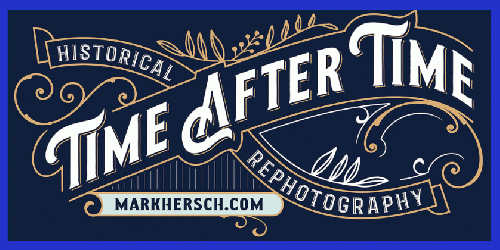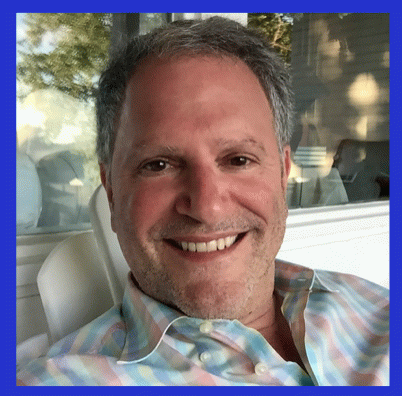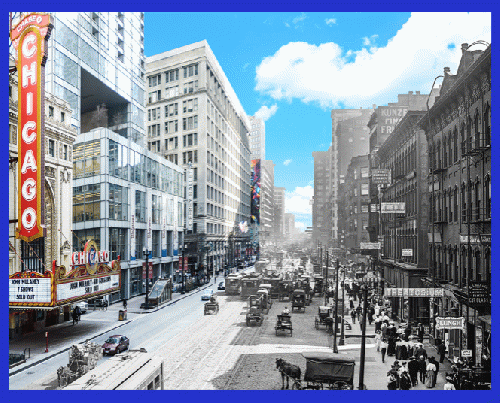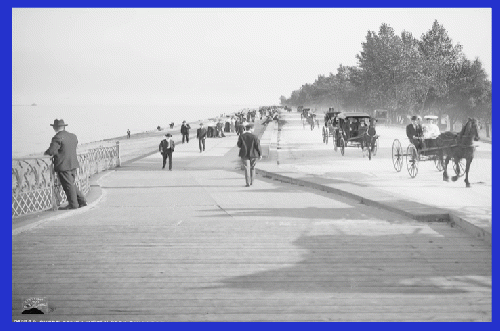My guest today is Mark Hersch of Time After Time: Historical American Rephotography.
Joan Brunwasser: Welcome to OpEdNews, Mark. I met you at the recent annual Lake Forest Art Fair on the Square. I'm willing to bet that many if not most of our readers have absolutely no idea what rephotography is. Can you get us started, please?
Mark Hersch: Sure! Rephotography is the process of taking pictures of the same subject at two different points in time. This technique is often used to show a before and after effect, such as satellite photo of a region before and after a flood, or of the polar ice caps 50 years ago and now, to show how they have receded. Pictures like these are typically shown side by side to demonstrate the before and after.
I take rephotography a step further. First I obtain a rare, turn-of-the-century photograph. Then I shoot an identical photograph from the exact same vantage point in the present day. I then blend them together into a single image that reveals parts of the old world and parts of the new.
JB: Can you give us an example, Mark? Pick a photograph and tell us what we're looking at and treat us to the backstory.
MH: I think one of the best examples is in this piece: "State Street South of Lake Street, Chicago". In this image you can clearly see State Street as it looked in 1900 on the right, combined with how it looks today, on the left.
What people really find intriguing is being able to compare the image to what the scene looked like in the original photograph taken over a century ago:
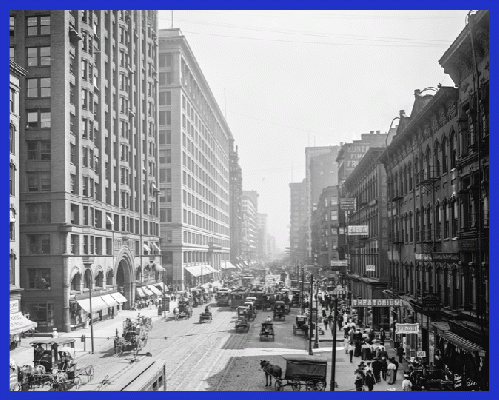
Original photo of State Street South of Lake Street, circa 1900
(Image by courtesy of Mark Hersch) Details DMCA
When sourcing images for my Time After Time work, I try to only select historic photographs that have significant period reference points: people in their period dress; horse drawn carriages, electric trolley cars, etc. And this one has them all. Plus, the modern portion of the image on the left shows the iconic Chicago Theater marquee, recognized the world over. All of which I believe is why this is one of the most popular pieces in the entire Time After Time collection.
JB: Cool! Being from Chicago, that one particularly resonates for me. How did you get started with this, Mark? I'm assuming you began with more traditional photography. How did you and your craft evolve?
MH: Yes. Perhaps like many readers here of *ahem* a certain age like me, I started taking pictures on an old Kodak Instamatic camera with four little flashcubes. Remember those? I moved on to Polaroid instant cameras with self-developing film, then to 35mm film cameras, developing my own prints in a darkroom. Nowadays, I shoot with a high resolution Nikon DSLR (Digital Single Lens Reflex) camera.
In addition to photography, I've always had an interest in both history and architecture, so I've pretty much found my passion in an endeavor that checks all the boxes of things I've enjoyed my entire life.
JB: How very lucky you are! What was your first rephotography subject? Why? Did you realize where you could go with it from the start?
MH: It all started in the summer of 2016. I came across this old photograph. There was an inscription that read "Shore Drive, Lincoln Park", and it also contained the date - 1905.
(Note: You can view every article as one long page if you sign up as an Advocate Member, or higher).



